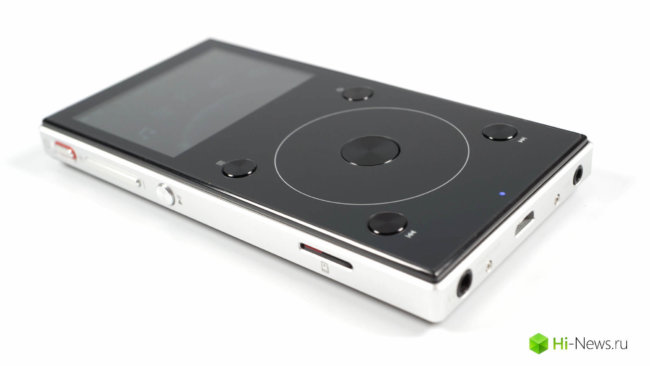
On our planet there are some static phenomena: the Sun rises in the East, cold in the winter, from Russian rap ears bleed, FiiO updates their players. FiiO X3 long enough is “a major clamps” in the company’s portfolio, and that’s all of the updates got to it.
Submitted FiiO X3 Mk3 was back in the summer, but only now started to reach the shops. This time the company did not make any sudden changes (reserves innovationjam left for X5-3), while on the other hand, called the X3 upgrade is quite small won’t work either.
FiiO continue the harmonization of its line of devices and the transition to the new code base. For older models based firmware supports Android 5.1.1, and the youngest got, apparently, Linux — X3-3 was similar to X1-2. Also changes were made to the design (now the wheel has touch, there was a “universal button” on the side). Changed and filling (now DAC became two, but this time it PCM5242, and the amplifier made balanced with a corresponding output), added Bluetooth.
As expected, the price remains the same, the recommended price X3 Mk3 is $ 200, on the local markets it may be in taxes and the working conditions of distributors.
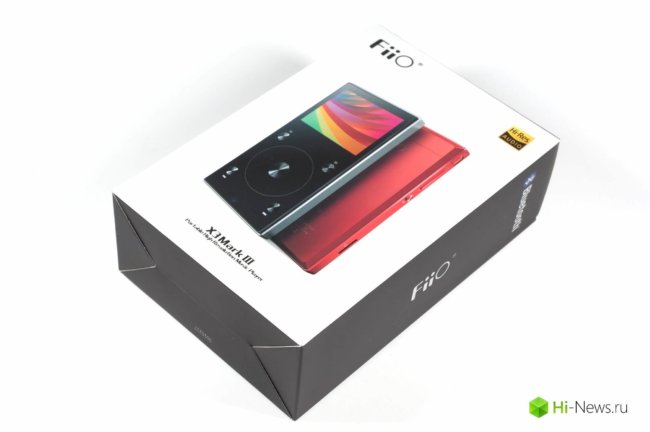
Specifications
- SoC: JZ4760B
- DAC: 2 × PCM5242
- OH: OPA2140 + OPA1622
- Screen: TFT 320 × 240
- Bluetooth: V4.1
- Battery: 2350 mAh
- Charging time: <3 hours
- Operating time with one charge: ≥10 hours
- Support lossless formats: FLAC, APE, AIFF, WAV, WMA, ALAC
- Support lossy formats: MP3, AAC, OGG, WMA
- DSD support: DSD64 (.iso .dsf .dff)
- Dimensions: 114 mm × 59 mm × 12.8 mm
- Weight: 126 g
- Recommended load impedance: 16Ω ~ 150Ω
Line out
- Frequency range: 5 Hz ~ 70 kHz (- 3dB)
- Total harmonic distortion+noise: ≤0,002% @ 1kHz
- Channel separation: ≥103 @ 1 kHz
- The ratio signal/noise: ≥113 dB
- Dynamic range: >107 dB
- Voltage: >1,9 Vrms
3.5 mm output
- Frequency range: 5 Hz ~ 70 kHz (- 3dB)
- Total harmonic distortion+noise: less than 0.002% @ 1 kHz
- Channel separation: ≥69 @ 1 kHz
- The ratio signal/noise: ≥112 dB
- Output impedance: <1,4 Ω
- Voltage: >is 6.5 Vp-p
- Power: ≥160 mW @ 32Ω, ≥15 mW @ 300Ω
Balanced output
- Frequency range: 5 Hz ~ 70 kHz (- 3dB)
- Total harmonic distortion+noise: less than 0.003% @ 1 kHz
- Channel separation: ≥97 @ 1 kHz
- The ratio signal/noise: ≥112 dB
- Output impedance: <1,2 Ω
- Voltage: >7,1 Vp-p
- Power: ≥190 mW @ 32Ω, ≥20 mW @ 300Ω
Packing and delivery
Don’t know whether it makes sense to repeat, but then, as usual, very dignified. Traditional sandwich box with good printing on the outside and thick cardboard inside. As always, lies on top of the player (just dressed in silicone case) and underneath there is a compartment with accessories. In addition to the above, to X3-3 put:
- an extra pair of protective films on the screen
- MicroUSB cable
- adapter for coaxial output
- leatherette cover
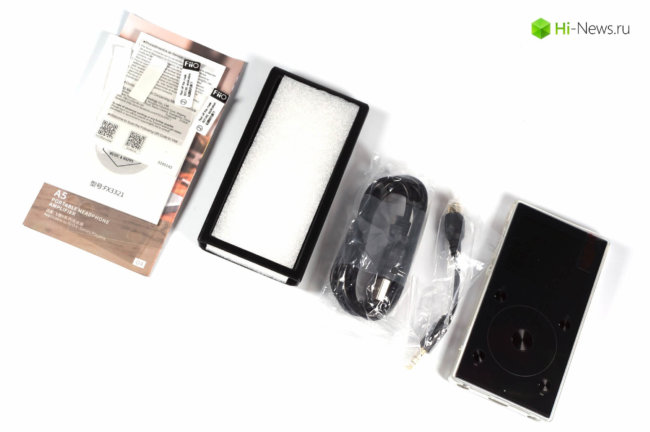
I note as a very positive thing is the fact that FiiO put in the kit even a cheap player just two of the case, offering the user a choice of two convenient options and without requiring you to spend extra. This, incidentally, is a stone in the garden next in line for a review of the player of the top segment, but about it another time.
Design and management
The design change causes a bit of a mixed feeling. On the one hand, on the “front projection” player was slightly larger than the previous generation, with another — it was also thinner, therefore, purely from my point of view, the ergonomics and “carmagnole” X3 Mark III had improved, easier to hold, easier to reach the buttons easier to manage.
He looks, in my opinion, has also become more modern, of course, not as X5-3, but aluminum in combination with glass front panel looks good. For connoisseurs of aesthetics there is an option in red color and with the red cover. The build quality is also at altitude, do not loose and not rattling around.
In General, the controls remained almost the same as it was in the previous generation.
On the left side is the volume rocker button on/off switch, also serves to lock, and the “multifunction button”. By default it works like the center button on the headset: on short press to start playback or puts it on pause, double tap switches to the next track and so on. In the settings menu, you can assign that key other functions: switching EQ presets, themes or playlists. In my opinion, all options, except the first — are not necessary, but I want to believe that FiiO will come up with (or user prompt) is more useful scenarios for using this button. The first option is fairly useful to control, say, through the pocket.
On the bottom of the left side hosts the slot for memory cards.
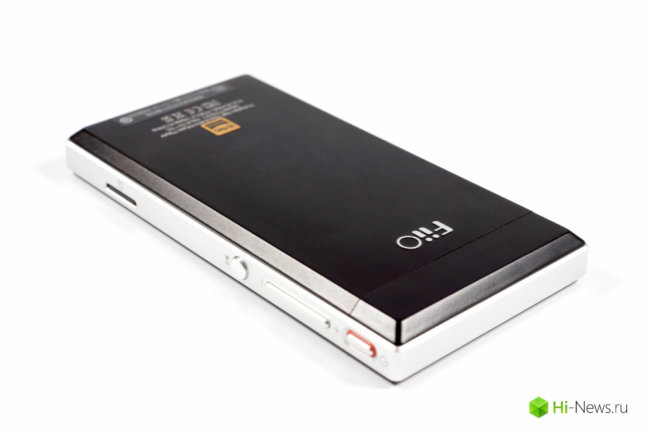
At the bottom of the player there are connectors — 2.5 mm “balanced”, 3.5 mm, which can be a headphone output, a line output, or to provide a digital signal on the coax. Exactly between them is MicroUSB. Yes, it probably could be replaced by USB-C, but then we lose the universal connector to connect to the dock and K5, and that while the FiiO can’t do that.
If we try to characterize the front panel briefly, the most appropriate word is “expected”. There is the screen compared to the previous version of the X3 he became more although not very high resolution the image looks a bit grainy. From the pros — everything is quite legible, with normal viewing angles, and even in the sun you can see that there is.
Below is the traditional FiiO 4 buttons and a wheel inscribed with the Central key. The wheel became touch, as is X1-II, despite the presence of critics of this decision, in my view, it’s still a step forward in terms of reliability, and with the adjustment function sensitivity — and in terms of convenience. The buttons also traditionally. The upper left opens a submenu where it is available (e.g., on the playback screen), right upper back on the list, the bottom two are used to navigate tracks and menus. Central is designed to select menu items and control playback/pause.
At the bottom of the front panel is the led indicator, it is normal brightness and does not irritate when using the player.
Time player performance in my standard test (44.1 kHz/16 bit FLAC, MEEAudio P1 as a load for 3.5 mm output, volume at a comfortable level for me) was 10 hours and 25 minutes. The charging time with 2A charger — 3 hours 20 minutes. The player also has a mode of “deep sleep” that saves battery during idle time. In General, in terms of power consumption parameters are normal.
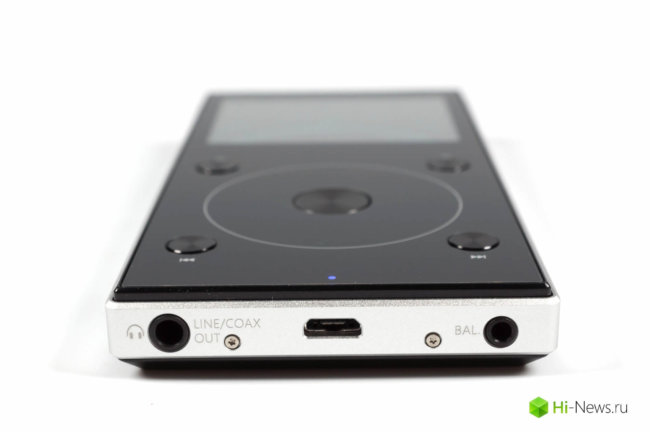
Firmware
In General, it is this point, perhaps, is the main reason for criticism of the new player, as it has happened with X1-II. Previous models of the players FiiO was very “grown soft”, polished by years of use. Now the company is in the process of a long transition from the uOS on Linux, with all the ensuing consequences. Overall my personal experience with the software X3 Mark III is quite positive — strong glitches I have not noticed a particular lag too. The only thing I had to face personally, — very slow scanning library, but since I don’t completely change the contents of their memory card, wait a few minutes for me is not a problem. Plus, there’s the new FiiO player has no function of volume leveling that was in their old SOFTWARE, can’t say that it is critical for me, but fans listen to all the files mixed up, would have considered it useful.
From the point of view of design and logic in front of us all the same old firmware from FiiO with a menu of 5 items.
The playback screen. Well, he returns to the playback screen, by the way, it is accessed by pressing from the main menu the “Back”button.
Mediatheque. In addition to the standard lists of artists, albums, genres and “all tracks”, also available in favourites, play-lists and a list of recently added files.
Files. Everything in General, obviously, is check your memory card. By the way, there is also work button context menu (it is possible to send the current file/folder to the playlist or delete them).
Playback setting. Standard gentleman’s set: the order of playback, remembering position and track memorization volume, gain, EQ (as usual, better without it), channel balance, mode linear output (volume can be adjusted or not) and go to the next folder when playing. Posted settings the multi-function button, which I wrote above.
System settings. Here, too, everything is expected to: update the media library, the Bluetooth setting buttons when the screen is locked (useful), brightness, backlight time, sleep timers, on / off, output settings, USB settings (DAC/mass storage), the choice of a few themes and language (Russian is present). Then FiiO has posted more rare options: should the player be controlled with the buttons on the headset, the size of the font, display cover art and song texts, the sensitivity of the scroll and it clicks off, format the memory and reset the device.
By the way, about Bluetooth. He then realized easier than the analogues from Shanling/Cayin, player can not be a “receiver” of the wireless connection, but in X3 wireless module began to work faster and more stable X1, so FiiO moving in the right direction. However, wireless functions have younger models FiiO still should be regarded as “critical for delivery”.
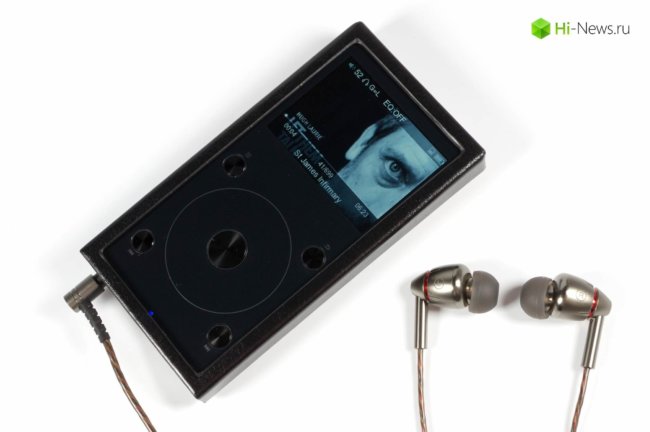
Sound
To listen to the device used the following headphones: iBasso IT03, 99 Meze Classics, Audio Zenith PMx2, Noble Kaiser Encore, Campfire Audio Andromeda, 64 Audio U12, HUM Pristine and others.
For X3 of the third generation, the developers chose a neutral sound pitch, oriented for lovers of detail and nepribrannoy. A new “Troika” sounds lighter previous model and “expath”, so fans of the accented bass will be unhappy, although unbiased when listening to a good player.
Bass have X3 Mark III fast, not bad for the price-resolution and detailed textures. He lacks a bit of weight, so to perfect (again, in this price range) it does not hold, but it is not lubricated and is normally controlled, not drowning out the upper frequencies. In principle, there is a culinary principle of “neosol better oversalt”, because to add bass weight to a headset is easy, but to improve resolution and control — would be problematic.
SCH serves in a neutral manner, something even resembling X7 Mk II (I don’t put players between the equals sign), there is no additional pumping emotions, there is no attempt to put forward the vocals or highlight something in the song. The player just plays what is written in the track, to the extent allowed by his level. Nice X3 conveys the nature of the instruments, but does not pull from the records all the dirt. An imaginary scene — the average in width and slightly less in average depth, but the separation is done right.
Vernacularly range — this is the part which most often guessed-category player solution without any compromise on HF usually start somewhere in the upper-middle segment (and not always then), in General, X3-3 did not become here an exception. HF then good, but adjusted “for the price” if you compare this player with something expensive, it is possible to note the lack of energy in the attacks, and the lack of “layering”. If to equate player with classmates, there is “top” then have a normal resolution, and attack (Woe to those who doesn’t like HF) played very provocatively. So X3-3 escaped the curse of the typical “comfortable” sound, which is so fond of doing, manufacturers in the lower segment.
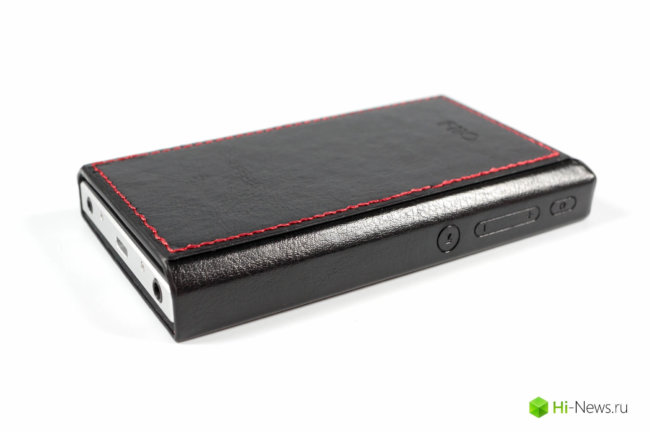
Of course, not be the case without comparisons. I’m not going to do anything stupid and compare this player with a different top (or not at all similar in flow) models, consider still his “entourage” and competitors.
Fiio X3-2. Overall between these two players there is almost complete parity. The difference in sound is not global (when quality blind test), the second generation is slightly heavier in the bass, the third — best solution. In this case X3-3 looks better equipped with Blutooth and balanced output, but X3-2 can now be bought cheaper and its firmware runs a little smoother. So, if you are already a owner of the X3 of the previous generation, to upgrade makes no sense, but if you’re only thinking about purchasing the new version looks, in my opinion, more interesting.
Fiio X1-2. X3-3 is slightly faster, has a balanced output sounds a little better (resolution, naturalness), offers a large range of Bluetooth. In General, the case when the little things add up noticeable big difference.
Fiio X5-2. Given the price drop on this player (the difference is now literally tens of dollars), X5 of the previous generation is perhaps the strongest competitor of X3-3. On the side of the previous generation are more energetic and full-bodied sound, flash, two memory cards. The novelty attracts with design and Bluetooth, and of lower prices in the future that will correct the situation.
Fiio X5-3. Once again wonder how the FiiO competently carries their models in segments. If X5 the new version was a cosmetic upgrade, the difference with the X3, a new generation would be small and not the fact that justified. Here we have a completely different player, starting with Android and finishing with an interesting sound for fans of continuous flow. So X5-3 was a definite step forward, as it should be.
Cayin N3. Another strong competitor of hero of today’s review. Purely sound — N3 sounds more massive, offering a small emphasis on bass and smoother midrange, whereas with X3-3 a little better resolution and to study HF. From the point of view of non-musical differences — N3 better implements the Bluetooth, slightly smaller, work a little longer. On the side of X3-3 — more power, less noise and overall “better” design and control (well, at least for my taste).
Shanling M2s. Another competitor X3-3 also offers the best implementation of BT and more advanced firmware, but M2s I really don’t like the management (I realize this is subjective, but it’s my review so that I can also Express a subjective opinion), and the sound he gives in and X3-3, and N3, even a little, but still…
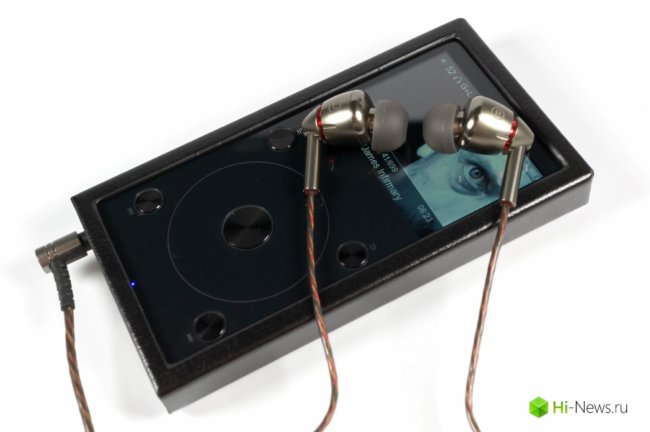
Compatibility
Of course, Audeze LCD-4 or, say, HiFiMan Susvara this kid will be rocking, but for most headphones it makes sense to use the portable, it will be quite sufficient. I would recommend to it a bit dark models, which can add massiveness to NCH, but in General it is necessary to proceed from what kind of sound you want.
Player better suited for styles that don’t need to pump up user extra helpings of bass, but generally more or less universal in the frame of the niche. Sensitivity to the quality of the material I would rate it a 5 out of 10.
Traditionally, multiple tracks for example
Edward Elgar — Enigma Variations. Remember this sad melody Rob Dougan from the soundtrack of the very first “Matrix”? Many know it, but still say that the entry is taken from one of the best works of sir Edward William Elgar, I decided to use the first example. I will not here recount the history of creation of the work, but still I advise you to read the article about him in Wikipedia. If to speak specifically about X3-3, it is well suited for such tracks, conveying all the nuances, though not perfect, but very good for its price.
Leila Martial — Left Alone. I generally don’t like “audiophile” recording vocals, so my collection is often bypassed popular records like Amber Rubarth, but some similar drives are so beautiful that I can’t resist, as happened, for example, Leila Martial. It has everything a typical “audiophile” chips — minimalist tools, very cool entry, emotional vocals — exactly what is particularly well suited to the detailed submission of the new X3.
Oscar Peterson — Bag’s Groove. Usually the jazz songs I prefer players with a darker flow, forming a nice “backing”, but the Mark III X3 so nice plays the piano in this track that I just couldn’t resist not to include it in the selection of examples.
Insights
In General, a good evolutionary upgrade of the popular model. As usual, reviews will be “disappointed” that the player is not so different from the previous generation, but the FiiO simply do not set ourselves such a goal. You can also chided X3 Mark III that he does not replay the model in 2 times is more expensive, but again — it is so intended. Simply put — player fits perfectly into a niche and out there and playing, offering, among other things, good design and the necessary set of modern chips.

Review of Fiio X3 player Mark III — gradual movement
Pavel Dmitriev